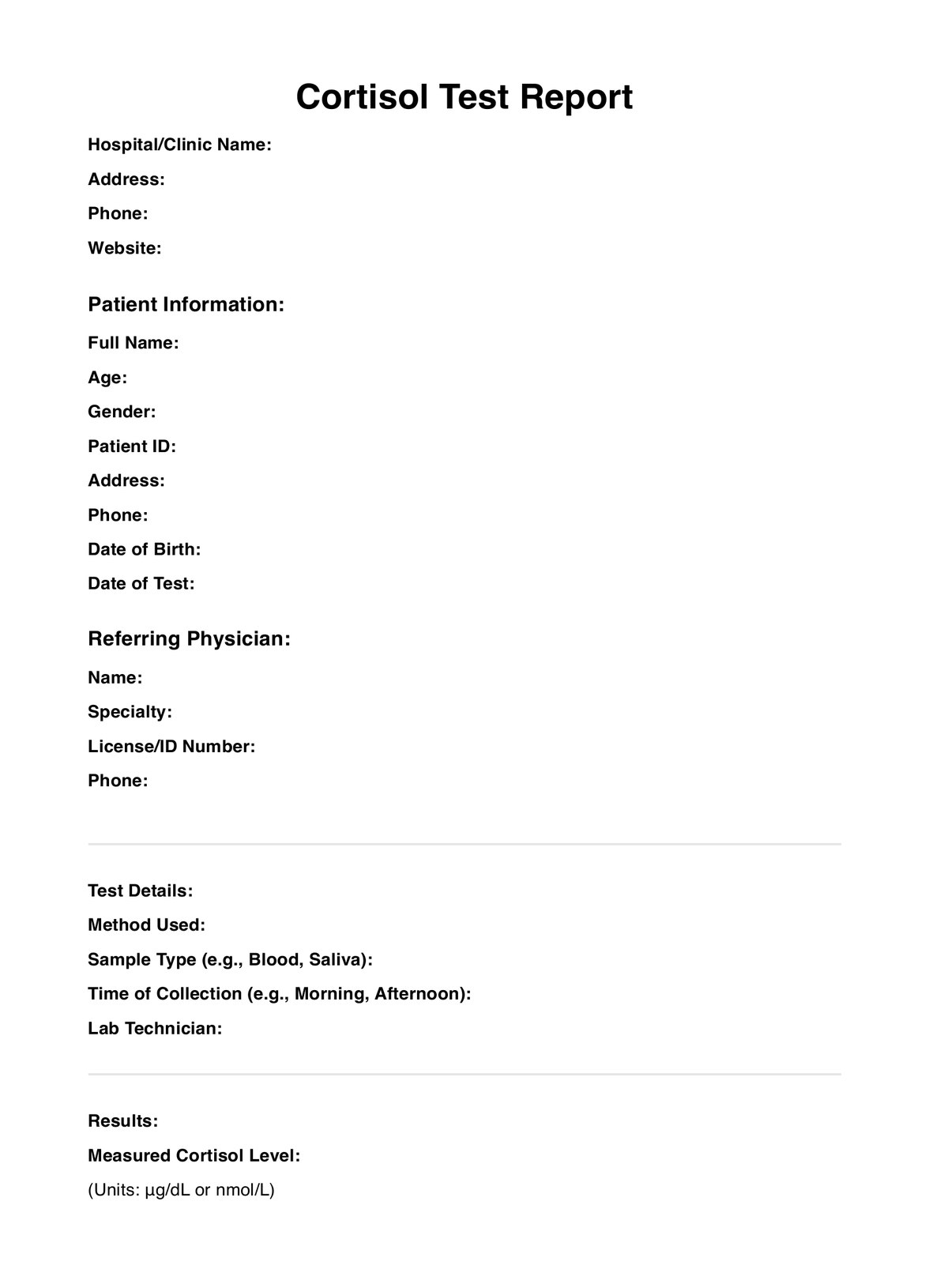A healthcare provider, such as an endocrinologist or a primary care physician, typically requests a cortisol test when they suspect an adrenal gland disorder.

Cortisol
Track your cortisol levels with a simple & efficient cortisol test. Measure stress hormone levels in your blood, urine, or saliva to identify adrenal-related conditions.
Use Template
Cortisol Template
Commonly asked questions
Cortisol tests are used to diagnose conditions that affect cortisol levels in the body, like Cushing's syndrome or Addison's disease. They're also used to monitor the effectiveness of treatment for these conditions.
Cortisol tests measure the cortisol level in your blood, urine, or saliva to help diagnose disorders related to the adrenal glands.
EHR and practice management software
Get started for free
*No credit card required
Free
$0/usd
Unlimited clients
Telehealth
1GB of storage
Client portal text
Automated billing and online payments











